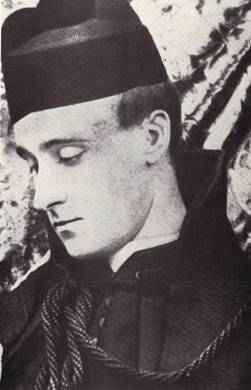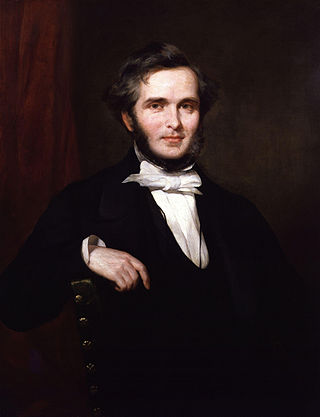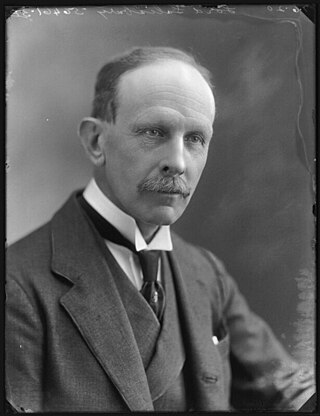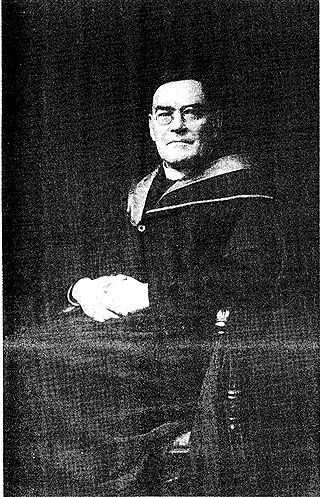Related Research Articles

Richard Bancroft was an English churchman, Archbishop of Canterbury from 1604 to 1610 and "chief overseer" of the King James Bible.

Cecil Day-Lewis, often written as C. Day-Lewis, was an Anglo-Irish poet and Poet Laureate of the United Kingdom from 1968 until his death in 1972. He also wrote mystery stories under the pseudonym of Nicholas Blake, most of which feature the fictional detective Nigel Strangeways.

Emperor Konoe was the 76th emperor of Japan, according to the traditional order of succession.

Frederick William Rolfe, better known as Baron Corvo, and also calling himself Frederick William Serafino Austin Lewis Mary Rolfe, was an English writer, artist, photographer and eccentric.

John Curwen was an English Congregationalist minister and diffuser of the tonic sol-fa system of music education created by Sarah Ann Glover. He was educated at Wymondley College in Hertfordshire, then Coward College as that institution became known when it moved to London, and finally University College London.

James Edward Hubert Gascoyne-Cecil, 4th Marquess of Salisbury,, known as Viscount Cranborne from 1868 to 1903, was a British statesman.
Combe Hill is a causewayed enclosure, near Eastbourne in East Sussex, on the northern edge of the South Downs. It consists of an inner circuit of ditches and banks, incomplete where it meets a steep slope on its north side, and the remains of an outer circuit. Causewayed enclosures were built in England from shortly before 3700 BC until at least 3500 BC; they are characterized by the full or partial enclosure of an area with ditches that are interrupted by gaps, or causeways. Their purpose is not known; they may have been settlements, meeting places, or ritual sites. The historian Hadrian Allcroft included the site in his 1908 book Earthwork of England, and in 1930 E. Cecil Curwen listed it as a possible Neolithic site in a paper which attempted to provide the first list of all the causewayed enclosures in England.

Sir Arthur Somervell was an English composer and educationalist. After Hubert Parry, he was one of the most successful and influential writers of art song in the English music renaissance of the 1890s–1900s. According to Michael Hurd, his most important work is found in the five song cycles, particularly his settings of Tennyson in Maud (1898) and Housman in A Shropshire Lad (1904).

Violet Georgina Milner, Viscountess Milner was an English socialite of the Victorian and Edwardian eras and, later, editor of the political monthly National Review. Her father was close friends with Georges Clemenceau, she married the son of Prime Minister Salisbury, Lord Edward Cecil, and after his death, Alfred Milner, 1st Viscount Milner.
Hadrian à Saravia, sometimes called Hadrian Saravia, Adrien Saravia, or Adrianus Saravia was a Protestant theologian and pastor from the Low Countries who became an Anglican prebend and a member of the First Westminster Company charged by James I of England to produce the King James Version of the Bible.
Sir Philip Montefiore Magnus-Allcroft, 2nd Baronet, CBE JP, was a British biographer. He wrote under the name Philip Magnus.

Martin Edward Fallas Shaw was an English composer, conductor, and theatre producer. His over 300 published works include songs, hymns, carols, oratorios, several instrumental works, a congregational mass setting, and four operas including a ballad opera.
Cecil Edgar Tilley FRS HonFRSE PGS was an Australian-British petrologist and geologist.

Reverend Canon Percy Umfreville Henn was a clergyman and teacher in England and later Western Australia. He is best known for his time as Headmaster at Guildford Grammar School and later for the building of the Chapel of SS. Mary and George.

The Trundle is an Iron Age hillfort on St Roche's Hill about 4 miles (6 km) north of Chichester, West Sussex, England. It was built on the site of a causewayed enclosure, a form of early Neolithic earthwork found in northwestern Europe. Causewayed enclosures were built in England from shortly before 3700 BC until at least 3500 BC; they are characterized by the full or partial enclosure of an area with ditches that are interrupted by gaps, or causeways. Their purpose is not known; they may have been settlements, meeting places, or ritual sites. Hillforts were built as early as 1000 BC, in the Late Bronze Age, and continued to be built through the Iron Age until shortly before the Roman occupation.

Whitehawk Camp is the remains of a causewayed enclosure on Whitehawk Hill near Brighton, East Sussex, England. Causewayed enclosures are a form of early Neolithic earthwork that were built in England from shortly before 3700 BC until at least 3500 BC, characterized by the full or partial enclosure of an area with ditches that are interrupted by gaps, or causeways. Their purpose is not known; they may have been settlements, or meeting places, or ritual sites. The Whitehawk site consists of four roughly concentric circular ditches, with banks of earth along the interior of the ditches evident in some places. There may have been a timber palisade on top of the banks. Outside the outermost circuit there are at least two more ditches, one of which is thought from radiocarbon evidence to date to the Bronze Age, about two thousand years after the earliest dated activity at the site.
Workington was historically a part of Cumberland now Cumbria, an historic county in North West England; the area around Workington has long been a producer of coal, steel and high-grade iron ore.
Thomas Caterer was a pioneer schoolteacher of Adelaide, South Australia who founded in 1862 a private school for boys which in 1866 became Norwood Grammar School.
Sir John Alfred Row KBE was a member of the Queensland Legislative Assembly.
Cecil Heap was a British trade union leader and politician.
References
- 1 2 Curwen (1930), pp. 324-325.
- ↑ "Man and Wife Die on Same Day". Evening Standard. 19 December 1929. p. 12. Retrieved 21 March 2022.